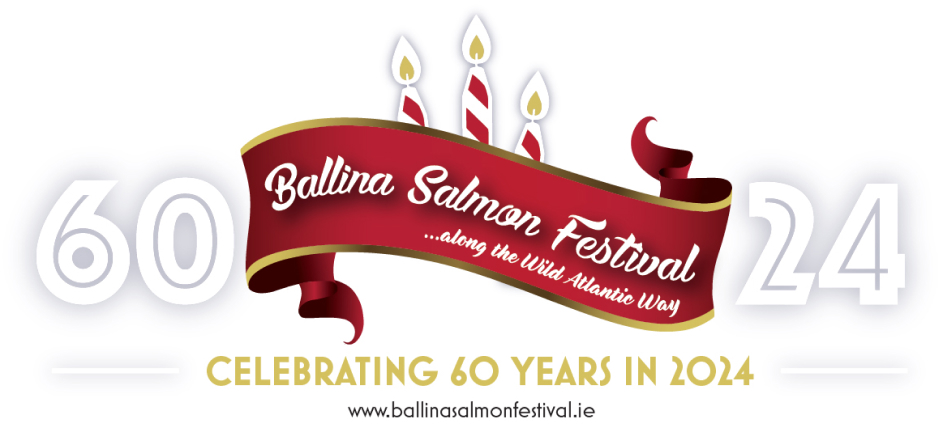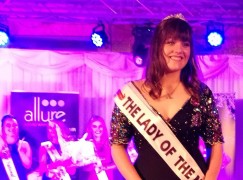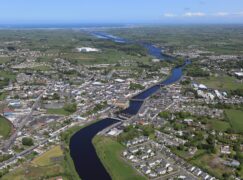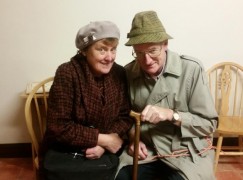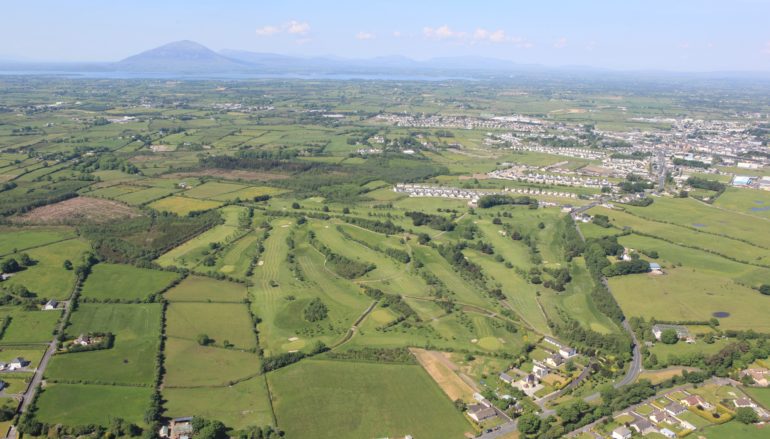

Tóg Mé Bhaile go Mhaigh Eó – Take Me Home to Mayo –
From Ballina to Pennsylvania, Sarah’s Story
By Paul Kostiak Part 2
In the first installment of this series I wrote of my great grandmother Sarah Carden. You may recall that Sarah was one of my own mother’s Irish grandmothers who help to raise her following her mother’s death in America in 1931, when Mam was only but 10 months of age. Sarah’s story intrigued me and so I set out to learn more about this woman who had herself endured hardships and challenges we can only imagine.
In the beginning I had very little information to build on. With the aid of Trevor Ward, resident genealogist at the North Mayo Heritage Centre at Enniscoe House, I had learned that indeed my Carden clan at one time hailed from Mayo. Sarah’s father David once worked as a herdsman on the Orme family farm in Moygownagh. My newfound connection with the North of Mayo, Ballina in particular, was beginning to take hold. What I was soon to learn of Sarah’s journey as a young lass from Mayo would be a genealogist’s pot of gold at the end of the rainbow.
Patrick Carden, my three times great grandfather and his wife Bridget Flynn originally hailed from Castleconor, County Sligo, in the townland of Ballymoneen. By 1854 their eldest son David and his wife Peggy Melvin had settled some 19 kilometres southwest in Ballyderg in the Roman Catholic parish of Backs/Knockmore. No doubt they were married in the church that now remains on the grounds of the Ballinahaglish Graveyard. It was there where Sarah was born, on the farm where her father plied his trade as a herdsman, working for the landlord following the Great Hunger. In time to come I would find the very spot on which stood their cottage and the handful of foundation stones which remain to this day.
Sarah was born in 1854 in Ballyderg and baptized on the third of December. Her sponsors were Pat Melvin and Catherine Melvin, more than likely brother and sister-in-law of her mother Peggy Melvin Carden. It’s curious to note that one M. Melvin would establish the Moy Hotel in 1867 on Knox Street (the current home of the Ballina Library) and the question of family ties to this historic building are left to future research.
There can be little doubt that Sarah ran barefooted through the farm fields as a young girl. Perhaps on special occasions the family would venture into the town of Ballina to attend to their custom in the shops along Knox Street. During my own visits to the now renamed Pearse Street I can’t help but imagine young Sarah enjoying her time there and perhaps returning to their modest farmhouse following a day in the town with a precious sweet or two in her pocket.
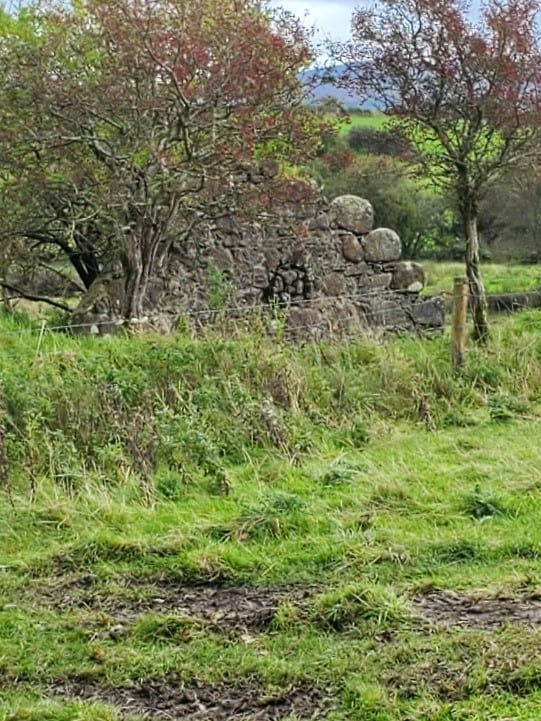
Remains of the Carden home, Knockmore – Photo by the author
For reasons that remain in question, David’s brother John emigrated from Knockmore to the United States in 1870 and settled in Northeastern Pennsylvania. This particular area had drawn thousands of Irish immigrants in the hope of finding work in the many anthracite coal mines and their accompanying railroads. These mines and railroads would quite literally fuel the industrial revolution in America in the years leading up to WWI. Many a Mayo man would play his part with his Irish blood, sweat and tears. Perhaps this is the reason for John’s voyage and the subsequent voyages of some of the family.
The following year, 1871, David and John’s brother Patrick accompanied John’s family (his wife the former Jane Ralph and their three children) and his niece, the eighteen year old Sarah. They set sail from Liverpool and arrived in the Port of New York on the 9th of May, 1871 on board the S.S. Wisconsin, some 15 years before the Statue of Liberty, the welcoming icon, would make her appearance, and twenty years before Ellis Island would greet her immigrants. It is quite apparent that John had sent the money home to Mayo for the others to follow. I often imagine the young Sarah standing on the deck of the Wisconsin while watching Mizen Head, her last glimpse of her beloved Ireland, as it disappeared over the horizon behind them.
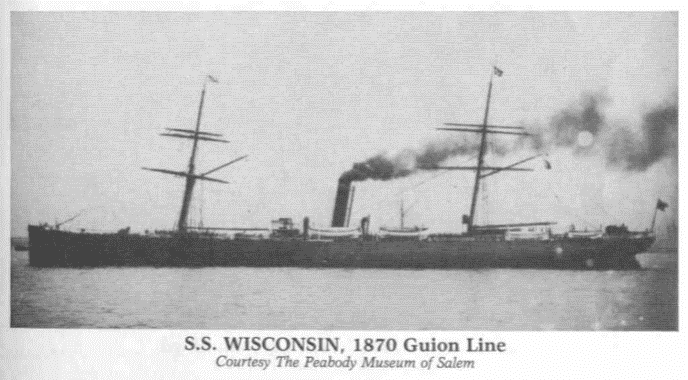
Upon their arrival in New York, the group still had a difficult journey to their destiny. Uncle John had settled in northern Luzerne County, Pennsylvania a year earlier. The area was growing daily with the thousands of immigrants from around the world coming to claim their stake and to work the coal mines and railroads. The rapid growth was such that In 1878, seven years after Sarah’s arrival, the northern part of the county would be separated in 1878 to form Lackawanna County, the 67th and last county to be formed in Pennsylvania, with the burgeoning coal town of Scranton as its seat of government. Scranton served as the center of the anthracite coal region and the ideal crossroad for the many railroads traversing the east coast from Boston to New York, to Philadelphia and onward to Baltimore, as well as westward to Chicago. Its rich sources of iron ore, along with the coal necessary for the production of iron, also proved to be beneficial for those seeking work. The Scranton Iron Furnaces, which had been founded by the Scranton family in 1840, would become the largest producer of iron in the United States by the end of the US Civil War in 1865. Thousands of miles of rail across the country could trace the origins back to Scranton and the sweat of her immigrants. Many had left Ireland not knowing what to expect, but with the knowledge of hard work and their faith to carry them. They had come to the right place for both. So much so that more than a hundred years later the City of Scranton would become Sister Cities with Sarah’s beloved Ballina, a testament to the connection I and thousands of my fellow Irish-Americans in Scranton feel.
The sentiment of that connection was beautifully portrayed in a fictitious letter written by my dear friend, the late actor (The Exorcist) and Pulitzer Prize winning playwright Jason Miller, himself a native of Scranton and son of Mayo, entitled “Dear, Da.” In it he crafts the 19th century words of a young lad from Killala who emigrated to Pennsylvania and is writing back home to his Da, telling of how his new home reminds him so much of Mayo.
“Well, Da, I’m sorry to digress like this but I want to tell you everything at once, and when I write to you I see your lovely face so close that I sometimes reach out to touch you. And the Brian Boru medal that you gave me on the dock that day I left is lying in front of me and when I’m troubled in mind and soul I speak to it and it talks back to me in your voice.” – Jason Miller
It’s difficult to say if the Cardens had sufficient funds to travel from New York to Scranton by rail. More than likely they found it necessary to make the trip by horse drawn wagon. The 200 kilometer journey (about the same as Ballina to Dublin) would have taken them across the Delaware River and through the Pocono Mountains of Pennsylvania before arriving in the valley that would become their second home. The end of thousands of miles of nervous anticipation, not really knowing what awaited them.
There is one thing that is certain. Within a year our young Sarah would meet and marry a tall, handsome gentleman of English (!) heritage by the name of John Boone. John was a descendant of the grandfather of fabled American frontiersman Daniel Boone, raised in the same Kentucky hills. Together they would raise their family that would include a son, my own grandfather David, named for Sarah’s own Dear Da who remained in Mayo, moving to Tuam in his later years to live with his other daughter Margaret and her family. He now rests peacefully alongside his wife Peggy Melvin ‘neath the green of Galway. And I have my own son Matthew David and my daughter Sarah to remind me.
In more recent times we have come to appreciate just where we come from. The television programme Who Do You Think You Are? talks about “the story of us” and to me that includes them as well as myself. Perhaps it’s the knowledge that in the not too distant past we were a part of their story, they just didn’t know it. And they are a part of ours. The story of a young lass from Mayo named Sarah. In these first two entries I tried to give you an idea of why we have come to love Ballina and Mayo in general as a way of a backdrop for the rest of my story. The story of the descendants of Sarah and others and our adventures back in her homeland. The places we’ve seen, the people we’ve met. Sure we’ve had enough of the craíc to write a book and, God willing, before too long we’ll be back for more. Until then, keep safe in these, our own difficult times. Slaínte!

